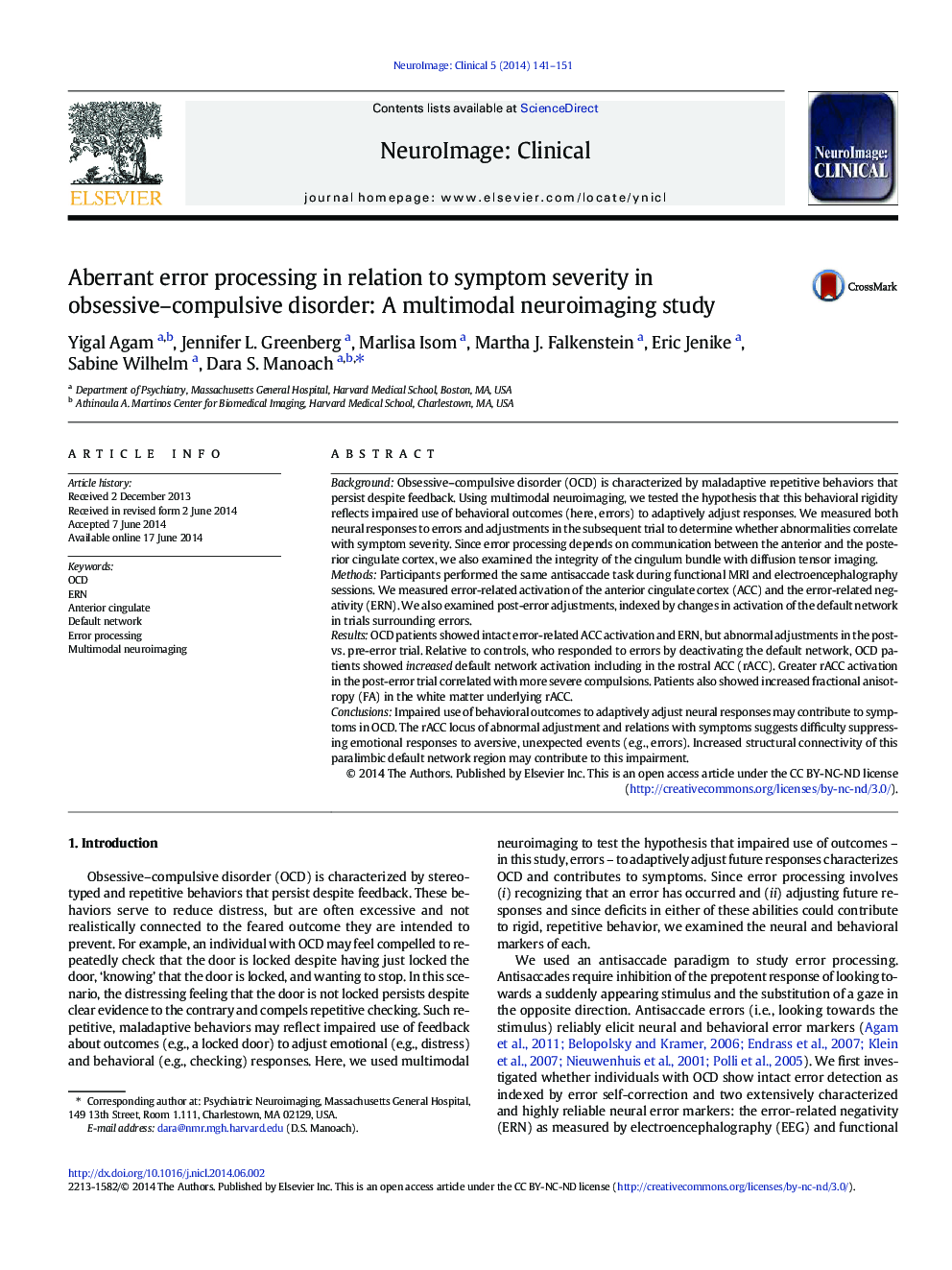| کد مقاله | کد نشریه | سال انتشار | مقاله انگلیسی | نسخه تمام متن |
|---|---|---|---|---|
| 3075449 | 1580962 | 2014 | 11 صفحه PDF | دانلود رایگان |
• We used multimodal neuroimaging to study neural responses to errors in OCD.
• The ERN and error-related fMRI activation of the anterior cingulate were intact.
• OCD patients showed abnormal post-error adjustments of default network activation.
• They also showed increased DTI-fractional anisotropy of the cingulum bundle.
• OCD patients show impaired use of behavioral outcomes to adjust neural responses.
BackgroundObsessive–compulsive disorder (OCD) is characterized by maladaptive repetitive behaviors that persist despite feedback. Using multimodal neuroimaging, we tested the hypothesis that this behavioral rigidity reflects impaired use of behavioral outcomes (here, errors) to adaptively adjust responses. We measured both neural responses to errors and adjustments in the subsequent trial to determine whether abnormalities correlate with symptom severity. Since error processing depends on communication between the anterior and the posterior cingulate cortex, we also examined the integrity of the cingulum bundle with diffusion tensor imaging.MethodsParticipants performed the same antisaccade task during functional MRI and electroencephalography sessions. We measured error-related activation of the anterior cingulate cortex (ACC) and the error-related negativity (ERN). We also examined post-error adjustments, indexed by changes in activation of the default network in trials surrounding errors.ResultsOCD patients showed intact error-related ACC activation and ERN, but abnormal adjustments in the post- vs. pre-error trial. Relative to controls, who responded to errors by deactivating the default network, OCD patients showed increased default network activation including in the rostral ACC (rACC). Greater rACC activation in the post-error trial correlated with more severe compulsions. Patients also showed increased fractional anisotropy (FA) in the white matter underlying rACC.ConclusionsImpaired use of behavioral outcomes to adaptively adjust neural responses may contribute to symptoms in OCD. The rACC locus of abnormal adjustment and relations with symptoms suggests difficulty suppressing emotional responses to aversive, unexpected events (e.g., errors). Increased structural connectivity of this paralimbic default network region may contribute to this impairment.
Journal: NeuroImage: Clinical - Volume 5, 2014, Pages 141–151
